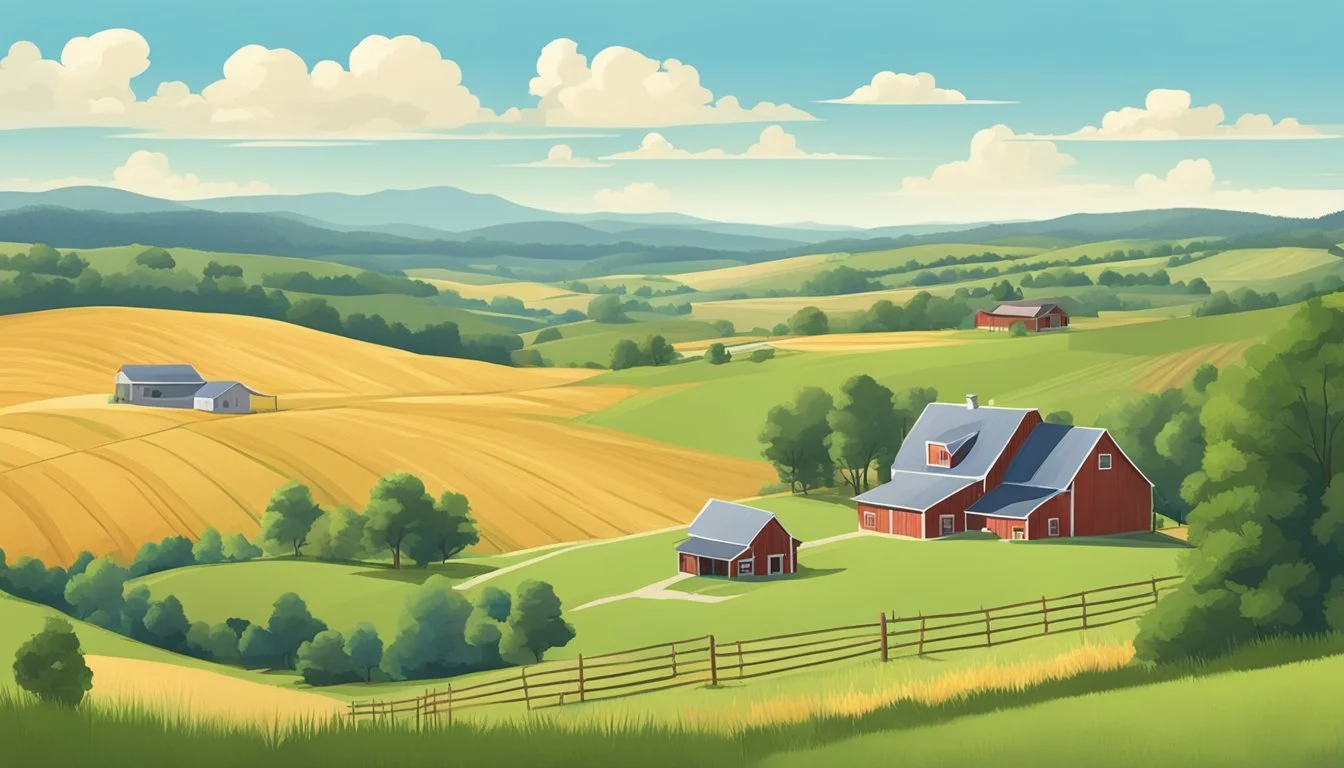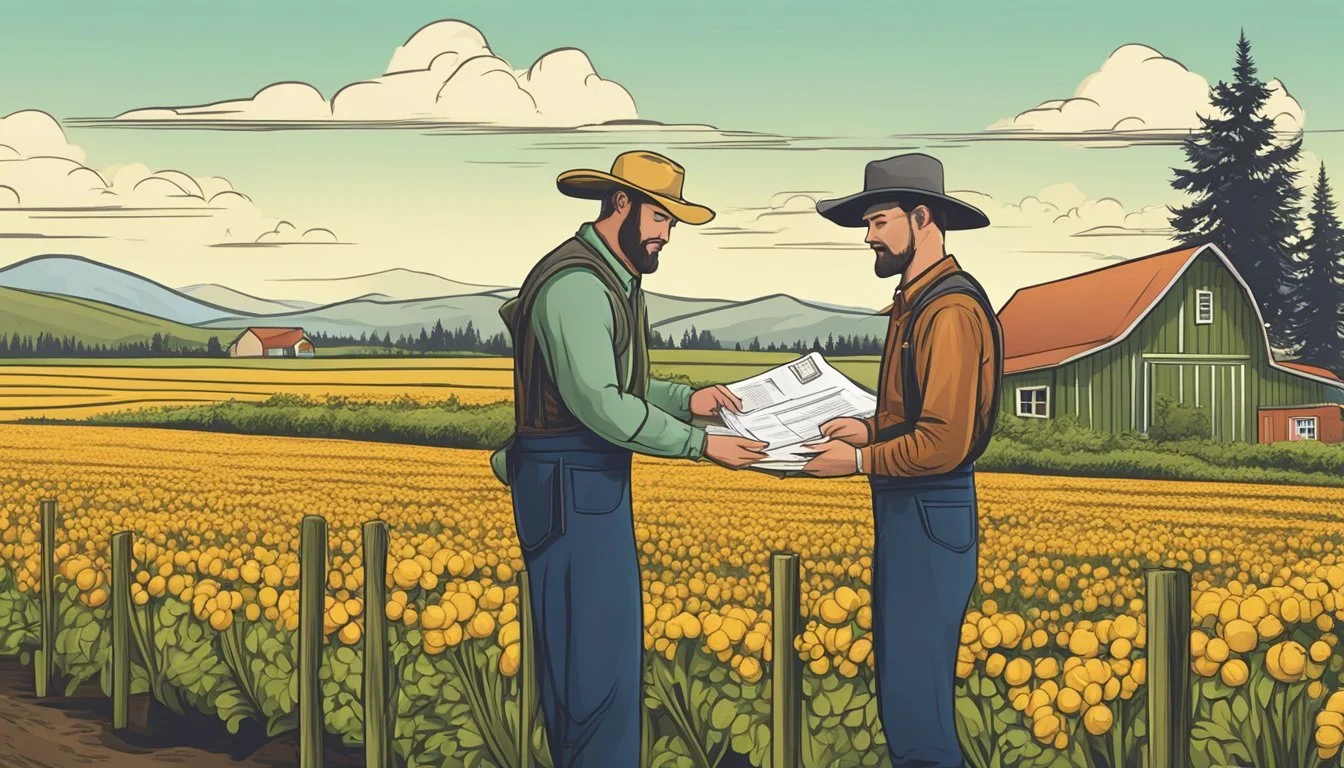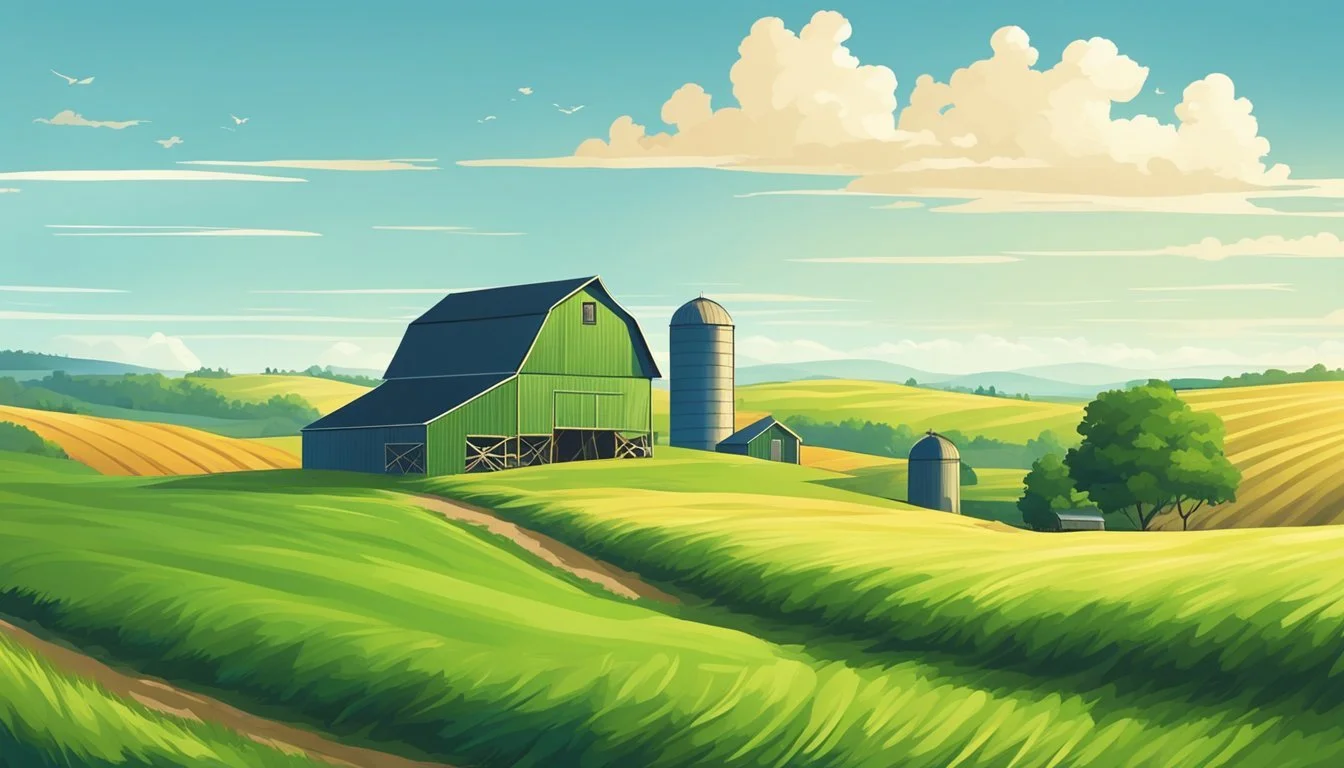Washington Farm Land for Lease
Opportunities for Sustainable Agriculture
This Article is Part of Our Guide on Navigating Agricultural Leases Across the US
Washington State offers a diverse range of agricultural land available for lease, providing opportunities for farmers and investors alike. With leases ranging from smaller plots in Benton and Franklin counties to larger acreage available in King County, individuals and businesses can find a variety of options to suit their farming needs. The state's rich soil and favorable climate conditions make it suitable for a wide array of crops and livestock, which contributes to the high demand for leasing land in Washington.
The process of acquiring a lease on agricultural land in Washington is typically straightforward. The Washington State Department of Natural Resources (DNR) oversees the leasing of state trust lands for agricultural and grazing purposes, ensuring that the land is appropriately used and managed. By submitting an application for unleased land, interested parties can enter into a process that includes site evaluation, environmental condition assessments, and public auctions. This structured approach facilitates access to farmland while promoting sustainable agricultural practices.
In addition to state-managed lands, private marketplaces and trust programs facilitate connections between landowners and farmers. Resources such as LandSearch and Farm to Farmer extend services to help new generations of farmers find suitable land, while simultaneously aiding landowners in selling or leasing their property to keep the land productive. As a result, Washington State maintains a thriving agricultural sector supported by a robust system for land leasing.
Understanding Land Leasing in Washington
In Washington, leasing land for agricultural purposes provides a vital financial resource for public school construction, and maintains the balance between productive lands and protected public resources.
Washington Farm Lease Basics
The state of Washington offers approximately 1.1 million acres of state trust lands dedicated to agriculture and grazing. These trust lands are managed by the Department of Natural Resources (DNR) with a dual focus on productivity and sustainable management. Lease agreements enable use of this land for a range of agricultural activities, including but not limited to:
Grazing: With over 500,000 acres allocated for grazing leases and permits.
Dryland Farming: Approximately 110,000 acres are available for dryland grain crops.
Irrigated Agriculture: A smaller portion of land comprises 32,000 acres suited for irrigated row crops.
Prospective lessees must understand that these leases are legal agreements subject to state regulations designed to uphold the integrity of the land and the interests of public stakeholders.
Key Advantages of Leasing in Washington
Leasing farm land in Washington offers several key advantages:
Financial Benefits:
Lease payments contribute to essential state programs, including public school funding.
Lessees can gain access to productive land without the substantial capital investment required to buy.
Sustainability:
The DNR cooperates with lessees to ensure land is used in ways that protect valuable resources like water, fish, and wildlife.
Leases include stipulations for sustainable land management, balancing economic use with environmental protection.
By entering a lease in Washington, farmers and ranchers can find opportunities to grow their operations while supporting the community and preserving natural resources.
Finding the Right Washington Farm Land
When seeking farmland for lease in Washington, prospective tenants should weigh critical factors including acreage size, localized market insights, and essential agricultural resources to optimize their agricultural endeavors.
Acreage Considerations
Prospective farmers should first determine the appropriate acreage needed for their specific agricultural activities. Factors to consider include the type of crops or livestock, rotation schedules, and equipment requirements. The USDA provides guidance on standard acreages for various types of farming, which can serve as a reference for newcomers.
Crop Farming: Typically requires more extensive acreage due to rotation and diversification needs.
Livestock: Depending on the livestock type, acreage needs may vary greatly, with larger animals generally requiring more space.
County-Specific Insights
Each county in Washington may present unique agricultural opportunities and challenges. Farmers should research county-specific zoning laws, climate conditions, and market demand. For example:
Stevens County: Known for sizable plots suited to a range of agricultural uses.
Franklin County: Offers arid land conducive to certain types of crops and livestock.
Local organizations, such as the Washington Farmland Trust, can provide tailored information and assist in the process of finding and accessing farm land that meets specific agricultural needs.
Access to Resources
Access to agricultural resources is crucial for a farm's success. Farmers must consider:
Proximity to water sources for irrigation
Availability of power for equipment
Accessibility of markets to sell produce
The ‘Farm to Farmer’ program serves as a valuable resource in connecting farmers with lands that have these essential amenities in place.
Overall, finding the right plot in Washington for agricultural pursuits requires diligent research and a clear understanding of the necessary resources for one's farming objectives.
Navigating the Leasing Process
In Washington State, the process for leasing agricultural and grazing land involves a clear set of steps, from considering the land's potential uses to finalizing the lease terms. They must understand the average lease rates and specific lease conditions that apply to such lands.
Initial Considerations
Before entering into a lease, potential lessees must evaluate the suitability of the land for their intended purpose, whether it's agriculture or grazing. They should research listing prices and average lease rates to understand the financial aspects of leasing. Potential lessees can access listings and lease information through the Washington State Department of Natural Resources (DNR), which oversees approximately one million acres allocated for agricultural uses.
Land Use Acreage Grazing 322,000 Grazing on forested land 110,000 Dryland grain crops 32,000 Irrigated row crops 14,000 Orchards and vineyards Not specified
The DNR's process begins with submitting a lease application for unleased land. The department evaluates the proposed land use and environmental conditions. If approved, the land is offered through a public auction.
Negotiating Lease Terms
Once a parcel of land is selected, and before the auction, it is crucial to negotiate the lease terms. Lessees should focus on the lease duration, rental rates, and any specific conditions such as early termination compensation, as seen in the state's amendment for grazing leases in 2021. The terms of a lease greatly influence the lease rate and the conditions under which the land can be used and maintained.
Lease contracts must explicitly define the responsibilities of each party, including who handles maintenance and how improvements are appraised. It is advisable to seek clarity on how the lease can be transferred, as an assignment transfers lease rights from the current lessee to another entity, and the conditions under which this can occur should be clear and agreeable.
Real Estate Listings and Market Trends
In the realm of Washington’s farmland real estate, current listings and market trends offer a snapshot of availability and price dynamics, with leasing prices ranging from moderate to premium depending on location and property size.
Analyzing Listing Age
New Listings: Properties for lease are introduced to the market regularly, with some listings being as recent as within two weeks. An example includes a 0.37-acre property in Benton County, Kennewick, listed for lease.
Extended Listings: There are properties that have been listed for longer periods, reflecting either less demand or a mismatch in leasing expectations. This is important for potential lessees to consider, as it may provide opportunities for negotiation.
The analysis of listing age helps identify how quickly land tends to move in the market and can be indicative of the property's desirability and pricing competitiveness. It is also reflective of overall real estate health in Washington’s agricultural sector.
Financial Aspects of Farm Land Leasing
Leasing farm land in Washington involves understanding the lease rates and property values. Farmers and landowners must consider these financial aspects carefully to establish agreements that are beneficial for both parties.
Estimating Lease Rates
Lease rates for farm land are influenced by several factors including land quality, location, and market demand. In Washington, rates have seen an increase over the years. For instance, while historical data shows an initial lease rate of $0 per acre, by 2019 this rate had risen, reflecting both the land's appreciation and changes in the agricultural economy. The lease rate should be assessed in relation to the average market value to ensure it is competitive and fair.
It is crucial to use current data to estimate lease rates and factor in the implied capitalization rate, which represents expected returns on the land. This ensures both the landowner and lessee enter into an agreement with a clear understanding of the land's potential to generate income.
Assessing Property Size and Value
When determining the financials of a farm land lease, it is also important to assess the property's size and value. Property size is measured in acres, with a direct influence on the overall value and listing price. Larger properties may command higher total lease values, while smaller plots may be more suitable for niche farming practices.
The value of the property is often tied to its ability to produce income, thus affecting the lease rate. The Department of Natural Resources in Washington manages around one million acres for agricultural production, with revenue contributing to public school construction. Property utilized for specific purposes like grazing or crops may have different values.
Landowners should obtain a reliable appraisal of the land's value and consider factors such as:
Accessibility to water and utilities
Suitability for various types of agriculture
Land improvements (like irrigation systems)
These variables will guide both parties to settle on a lease rate that is reflective of the property's size and value, and supports a sustainable farming operation.
Land Use Considerations
When considering leasing farmland in Washington, stakeholders must differentiate between uses such as agriculture and grazing, and adopt sustainable farming practices for long-term viability.
Agricultural Vs. Grazing Land
Agriculture: Prospective lessees should understand that land leased for agricultural purposes in Washington often requires an assessment of soil type and water availability. The United States Department of Agriculture (USDA) may provide resources and guidelines for soil health and conservation, which can influence the lease terms.
Lease rates are typically determined by fair market value, factoring in the potential for different crops and both landlord and lessee investments. Washington State trust lands are available for lease, and the lessee is expected to optimize both short-term and long-term returns for the trusts.
Grazing: Farmland designated for grazing is subject to similar lease assessments, but with a focus on factors like pasture quality and carrying capacity. Washington farmland trust entities may be involved in these leases, ensuring land stewardship and the preservation of agricultural heritage through appropriate grazing practices.
Sustainable Farming Practices
Farmers and ranchers leasing land in Washington are encouraged to commit to sustainable farming practices. Such practices are intended to maintain soil health, prevent water pollution, and conserve water resources.
Soil Conservation: Maintaining soil health through crop rotation, cover cropping, and minimal tillage.
Water Conservation: Implementing irrigation practices that optimize water use efficiency.
Pest Management: Utilizing integrated pest management (IPM) strategies to minimize chemical use.
These practices align with the USDA's conservation programs and Washington's agricultural guidelines, ensuring that land use is both productive and environmentally responsible. Lessees should be aware that some land trusts might have specific sustainability requirements in their lease agreements to support these objectives.
Getting Started with Your Lease
When embarking on a leasing journey for farmland in Washington, prospective lessees need to be diligent in understanding the leasing process and accessing the necessary resources to ensure a successful tenure.
Steps to Take Before Leasing
Research and Evaluation: Understanding one's own needs and the potential of the land is the first critical step. Parties interested in leasing should:
Assess the land's suitability for the intended agricultural or grazing production.
Verify zoning regulations and environmental conditions that may influence farm practices.
Due Diligence with Documentation: It is vital to:
Examine previous land use records and request a soil test if necessary.
Review the lease terms closely before signing, paying special attention to lease duration, permissible land use, and any restrictions.
Finding Support and Resources
Land Access Programs: Organizations like the Washington Farmland Trust assist new farmers in securing land through various programs. These afford opportunities both to lease land and to eventually transition into ownership.
USDA Assistance: The United States Department of Agriculture (USDA) provides resources and tools for lessees through their local service centers, including:
Guidance on conservation practices and land improvement
Information on farm management and planning
Bold action, backed by thorough research and support from dedicated agricultural organizations, ensures that lessees are well-equipped to commence their agricultural ventures on leased land in Washington.
Conclusion
In recent years, Washington has seen a notable uptick in the interest and availability of farm land for lease. Prospective tenants considering the state's fertile grounds are met with a variety of options accommodating different scales of agricultural operations.
Key Points:
The rental rates for farmland in Washington have increased, reflecting the land's appreciation and demand.
Resources and statutes are in place, guiding the leasing process, ensuring legal compliances and safeguarding both lessor and lessee interests.
Online marketplaces like LandCashin provide platforms to view and access available plots, simplifying the search for potential lessees.
Prospective farmers and businesses should assess their requirements against the site conditions and utilize comprehensive guidance by institutes like Washington State University to aid in making informed decisions about land leasing.
The table below summarizes the essentials for consideration when leasing farmland in Washington:
Consideration Description Current Rates Ensure awareness of the latest rental rates per acre. Accessibility Evaluate proximity to markets and transport networks. Land Quality Soil fertility, water availability, and topography checks. Legal Framework Understand leasing statutes and rights in Washington. Support Resources Leverage university and online guides for best practices.
Careful evaluation and leveraging of available resources guarantee that the endeavors in Washington's agricultural leasing landscape are approached with rigor and strategic planning.








